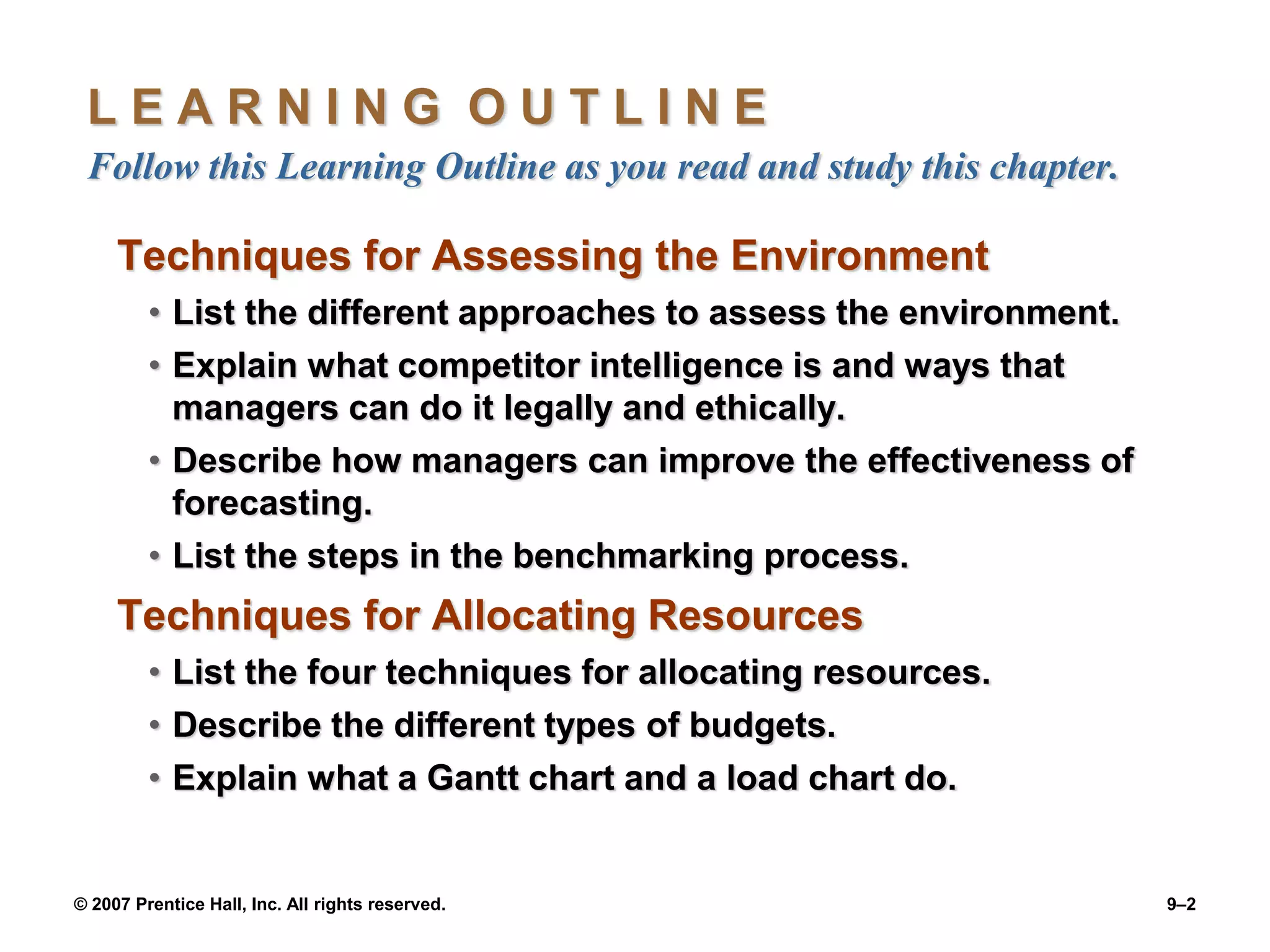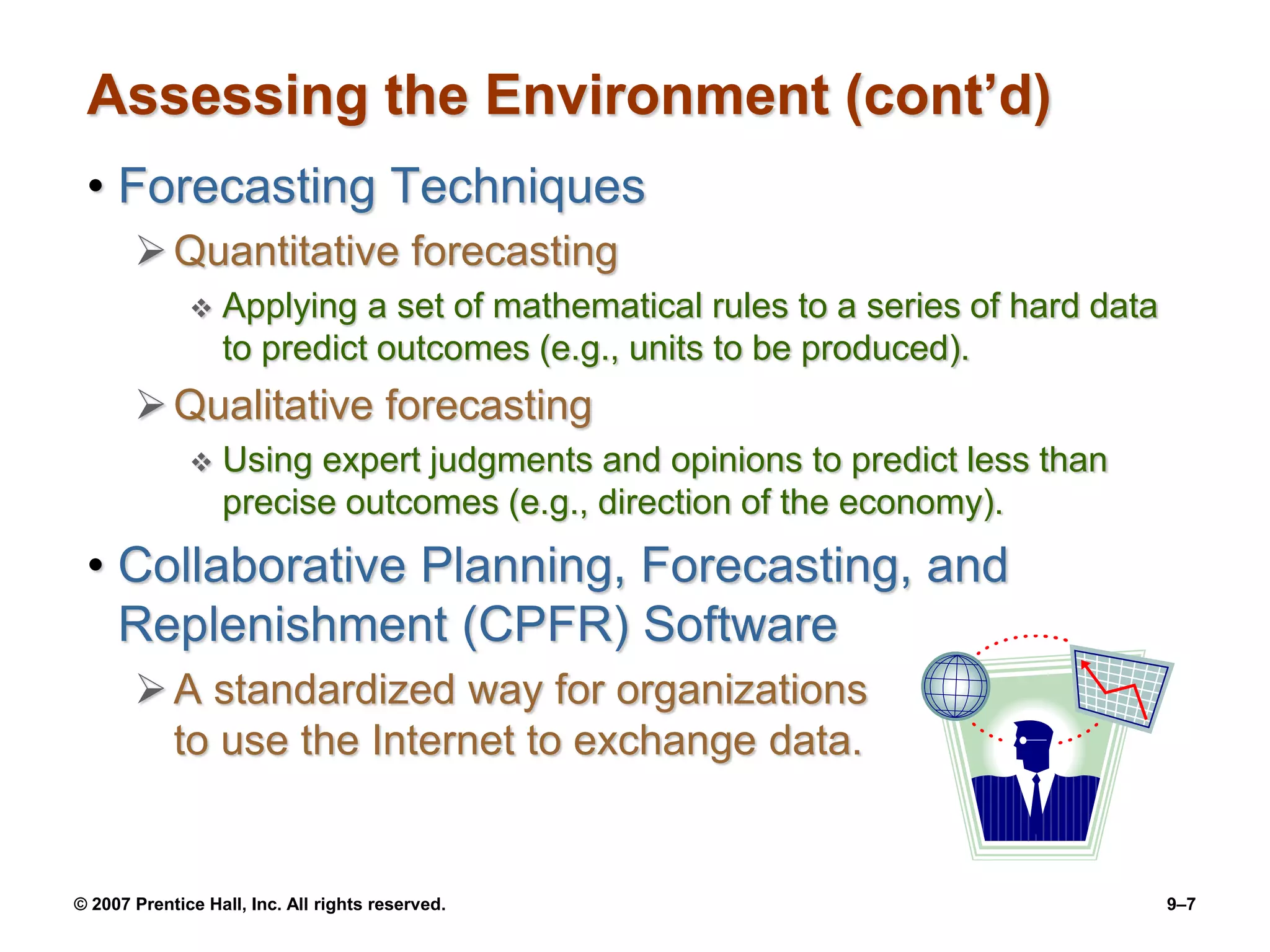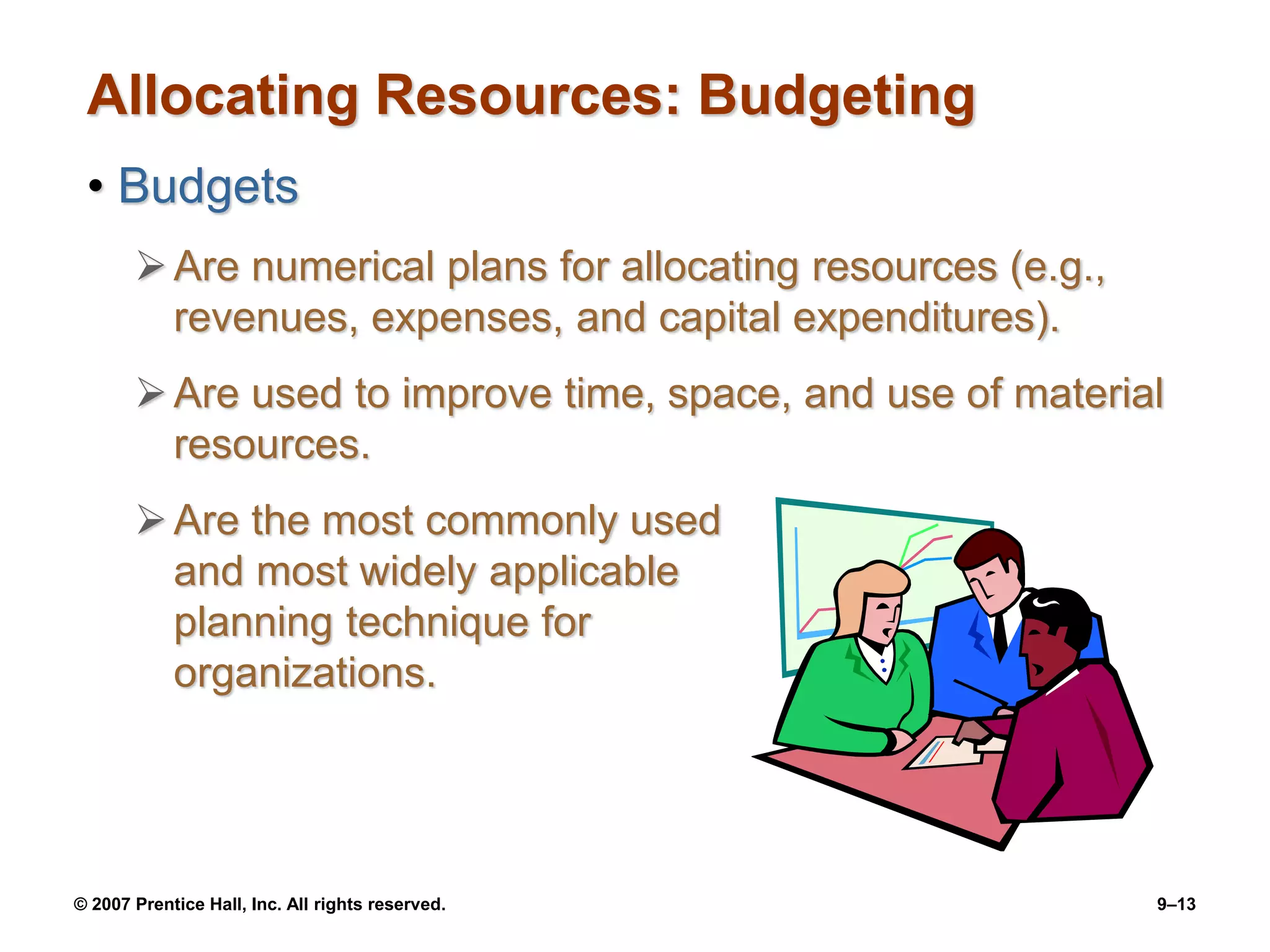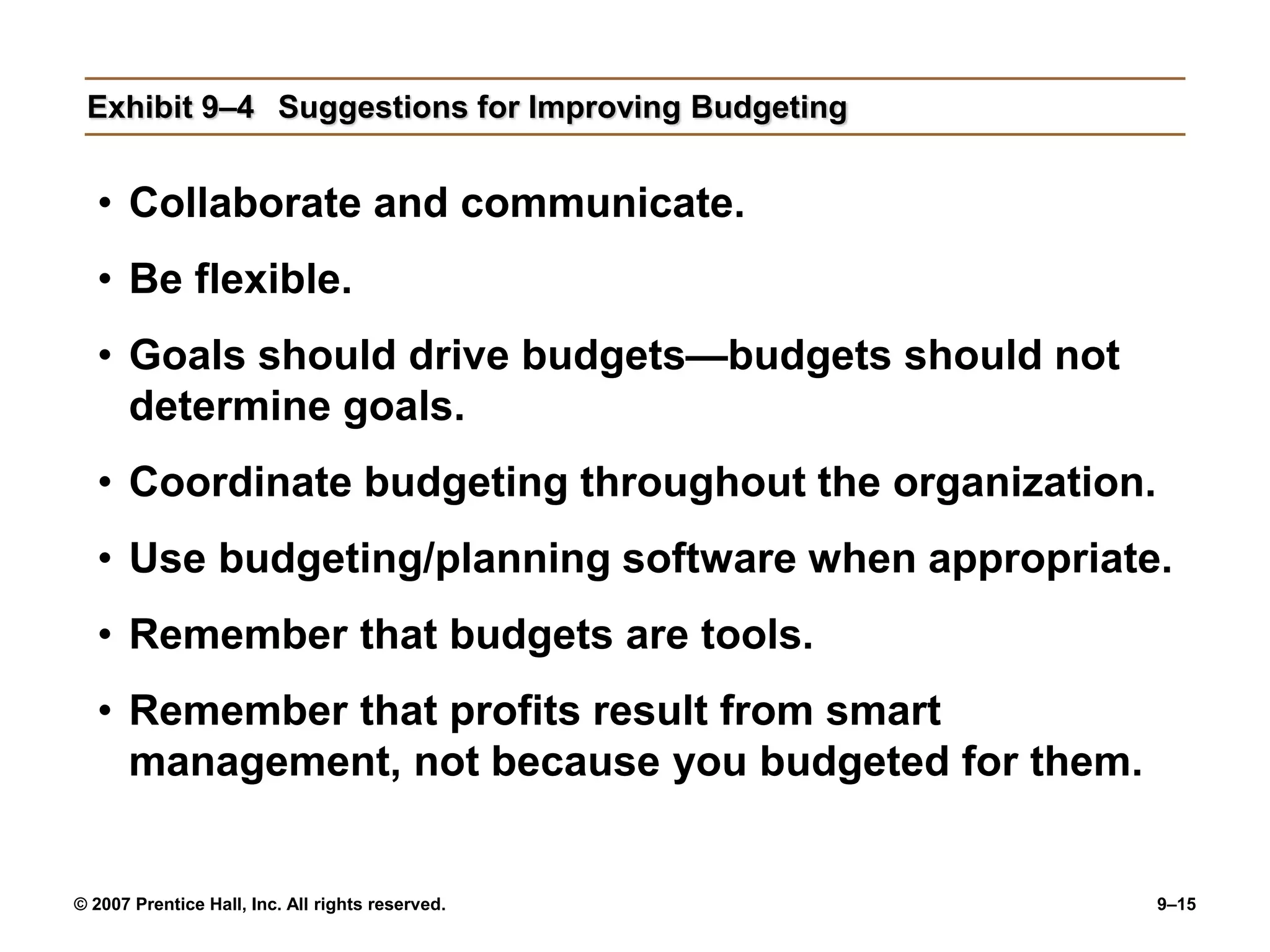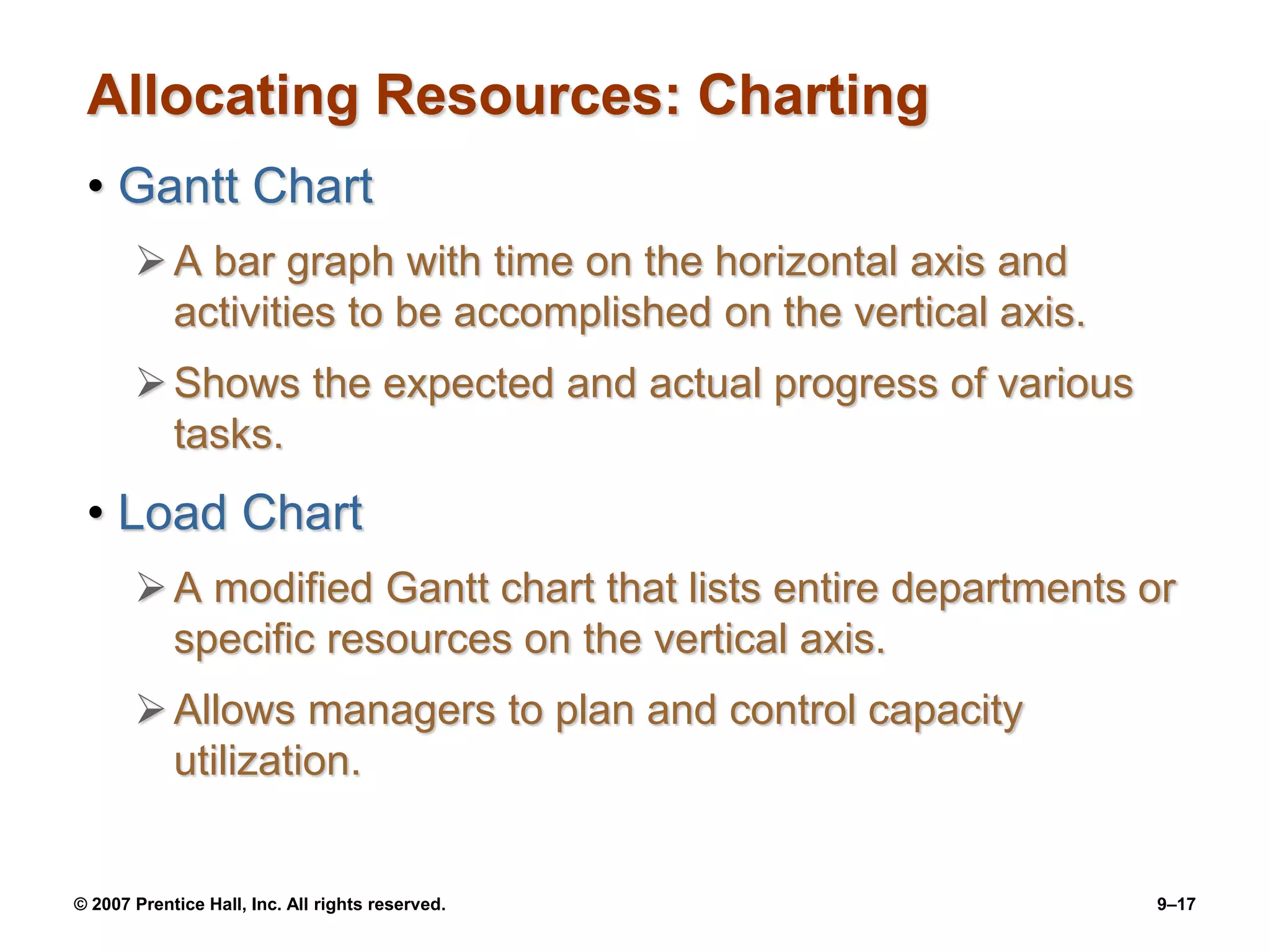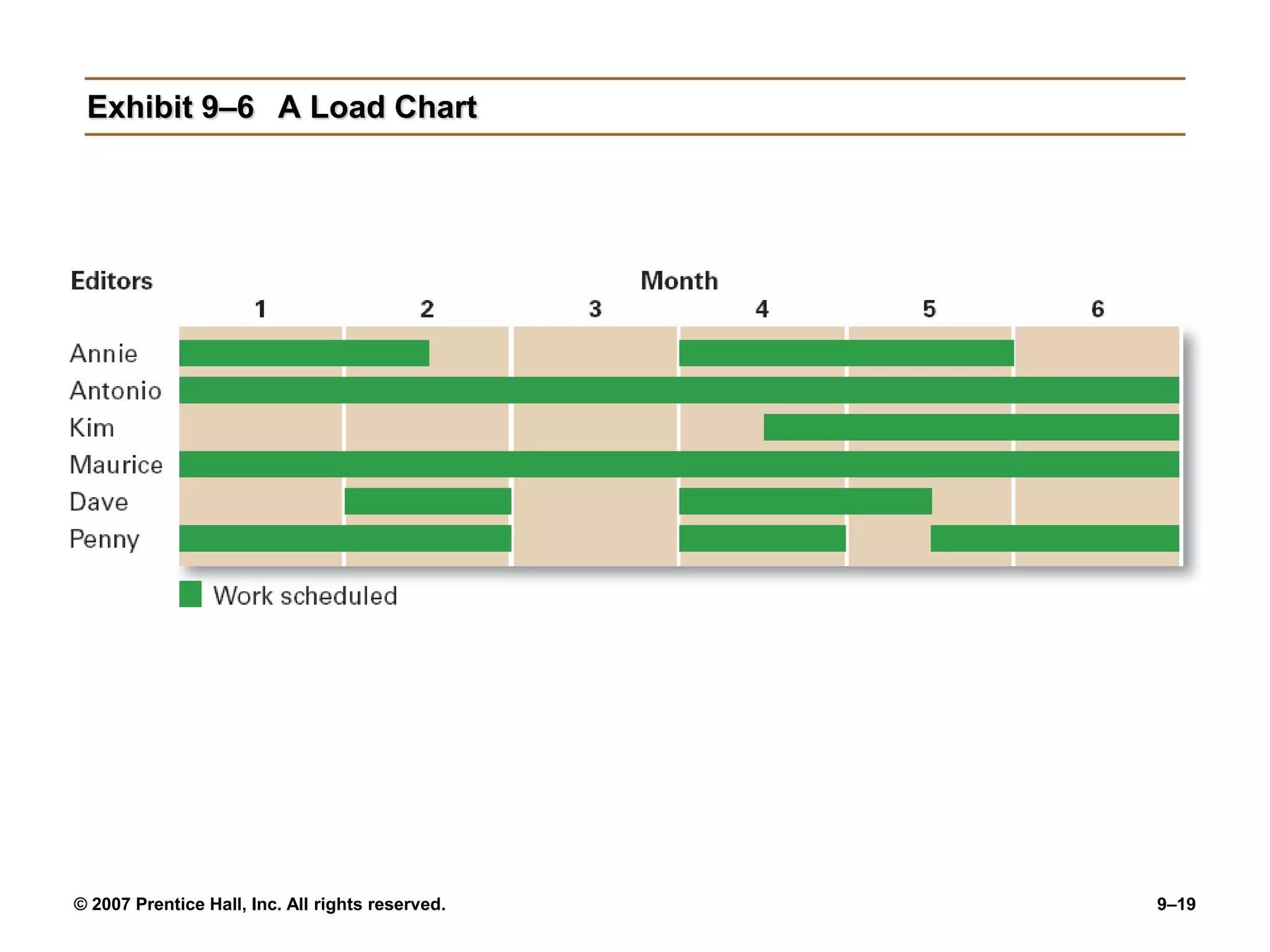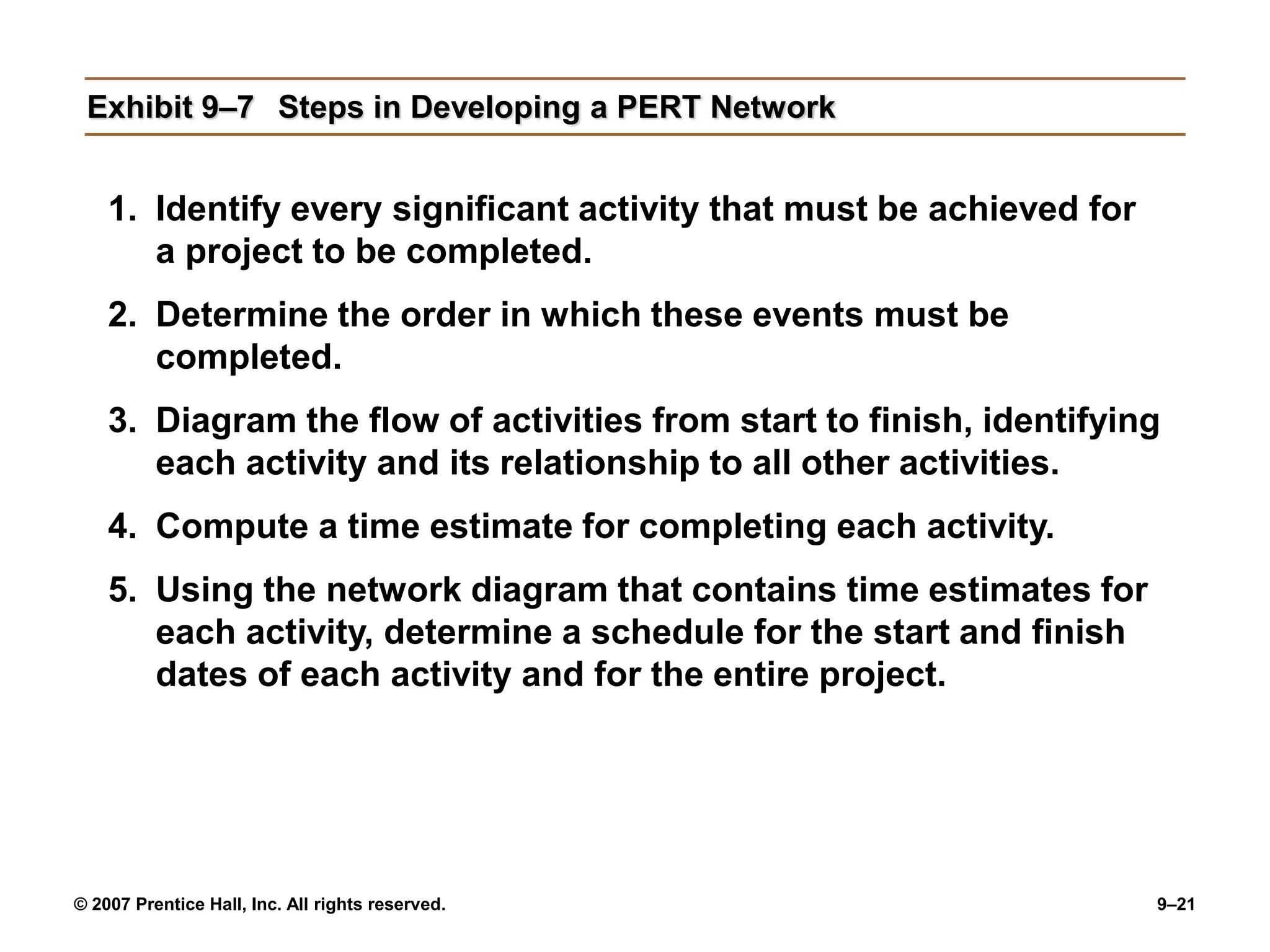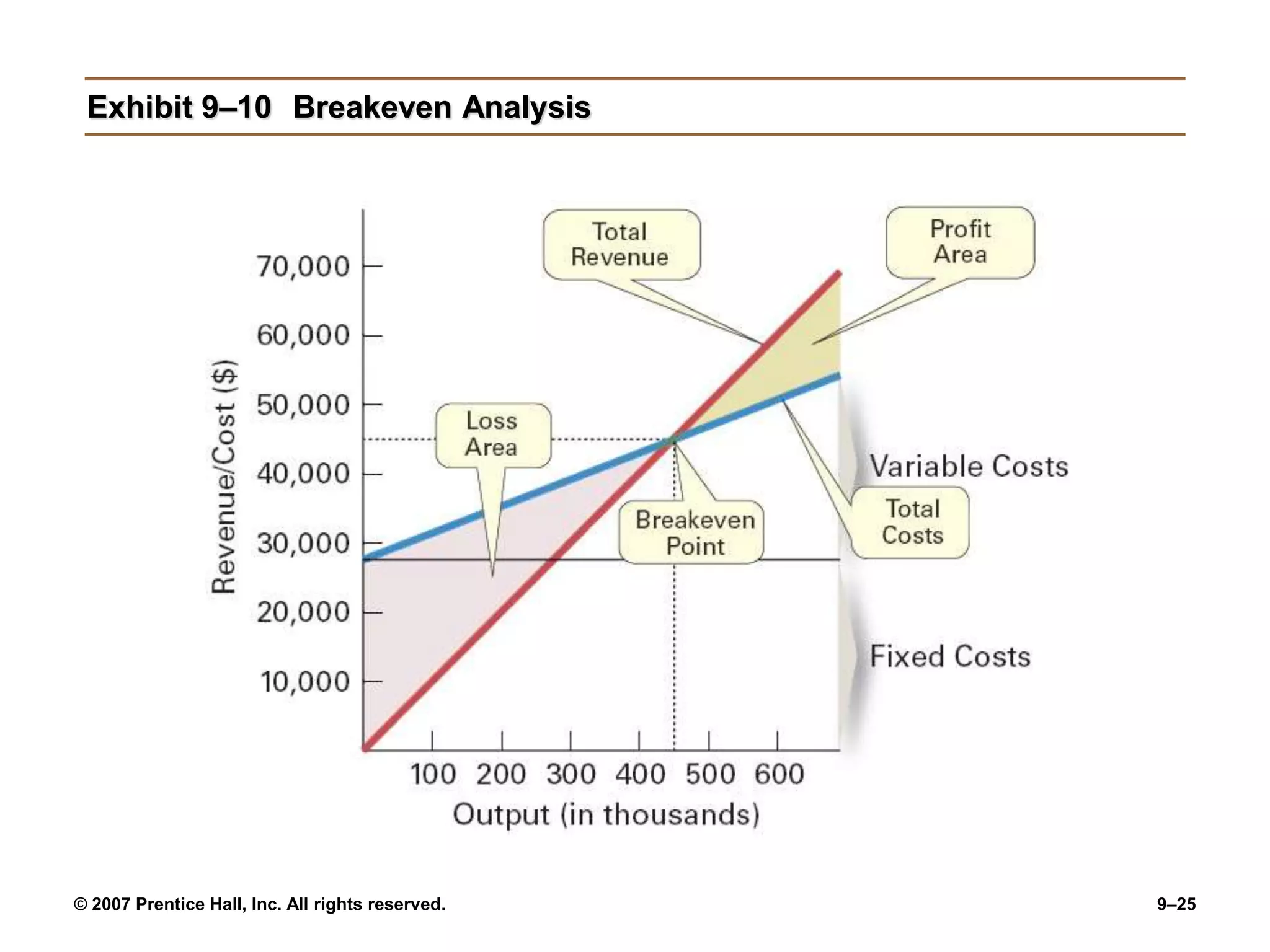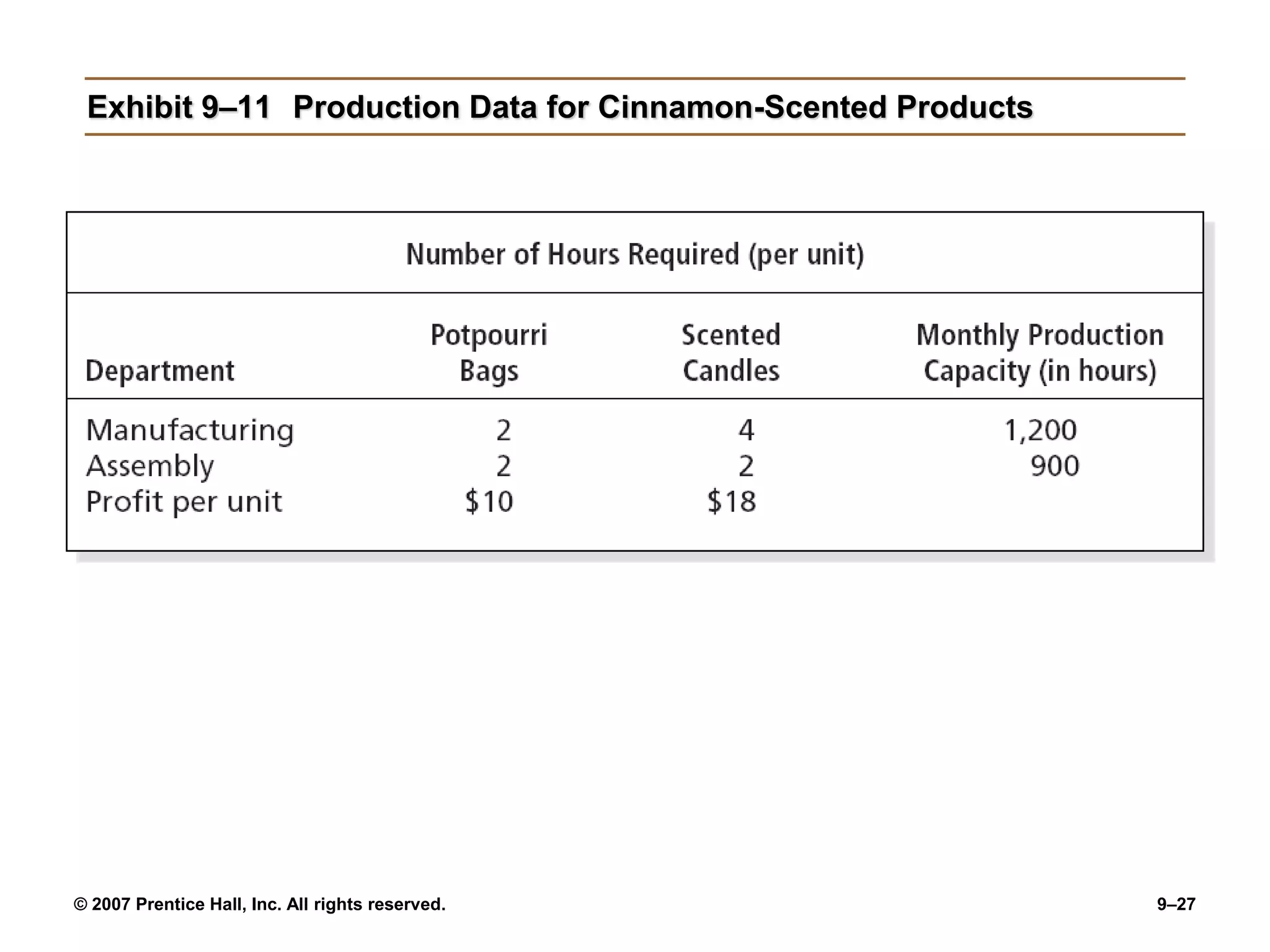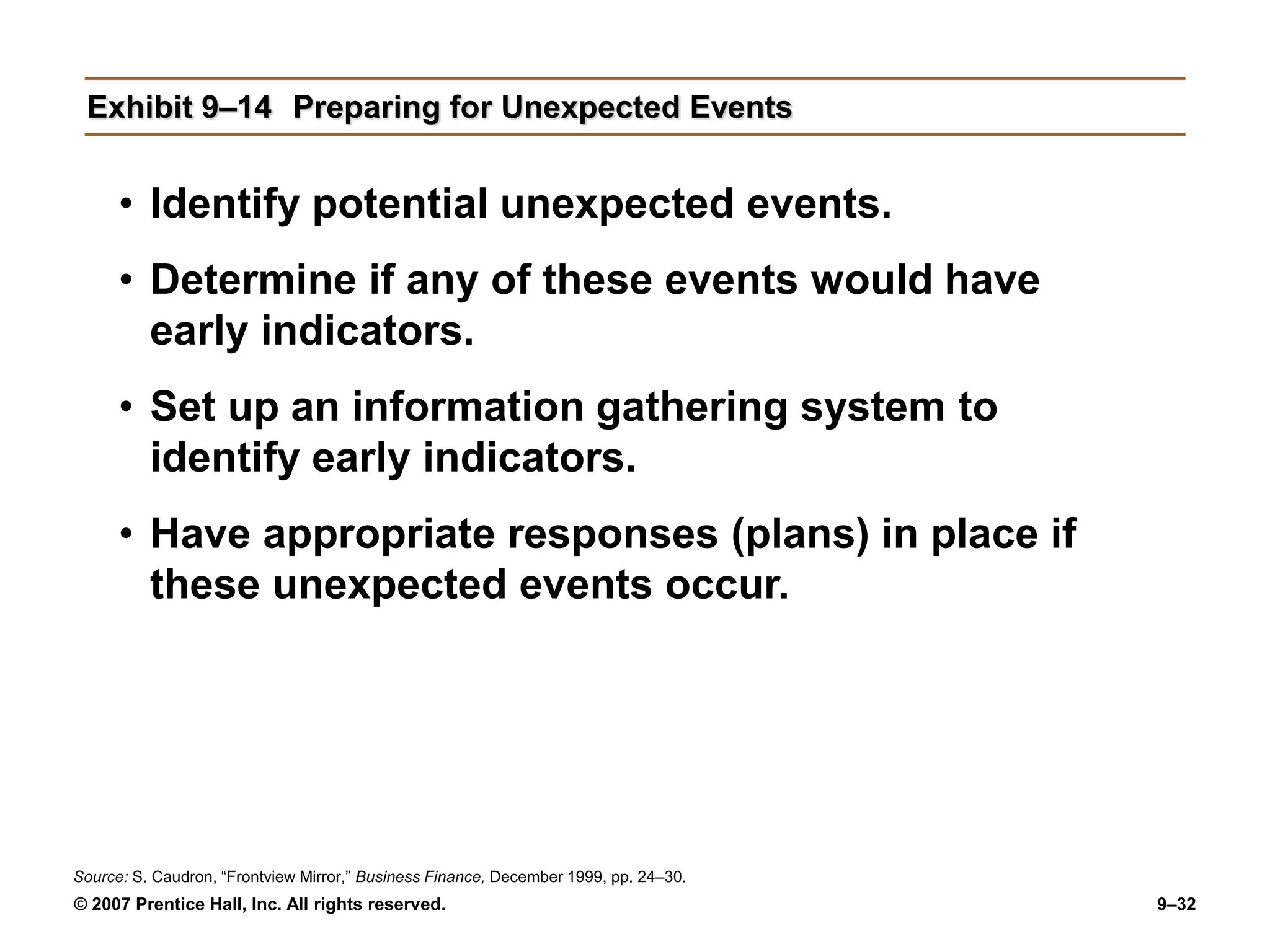This chapter discusses various planning tools and techniques for managers. It covers assessing the environment through techniques like environmental scanning, competitor intelligence, and forecasting. It then discusses allocating resources through budgeting, scheduling, Gantt and load charts, PERT network analysis, breakeven analysis, and linear programming. Finally, it covers contemporary planning techniques like project management, scenario planning, and contingency planning.

